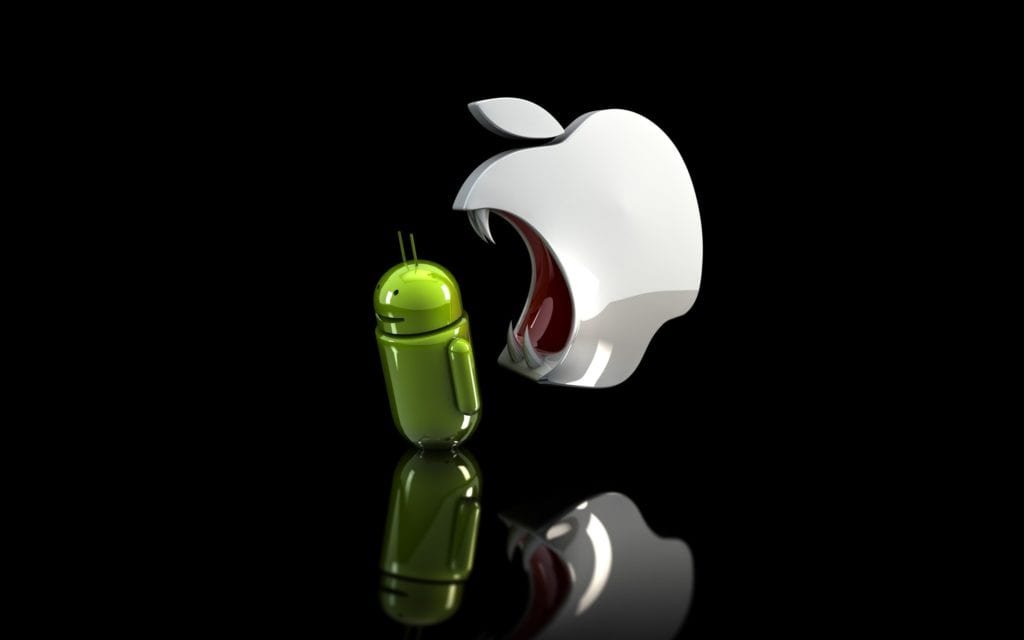iPhone X copied Android and here is why

The new iPhone X nets a considerable measure of firsts” for Apple gadgets. That bodes well; it speaks to the tech giant’s boldest, priciest handset yet.
The thing is, huge numbers of these measures have been gliding around on Android phones; some new, and other of age. That is not an awful thing. Gadget producers obtain ideas constantly, and when they do, we as a whole get a lift. Rather than just having two options for double focal point cameras, for instance, we now have a dozen.
Apple is following Androids case, and furthermore these are the things that they have copied.
No home button
After the first iPhone presented the notable home button, other phone producers of the day stuck to this same pattern. From that point forward, numerous Android phones moved far from a focal home button, utilizing three physical or capacitive navigation buttons. Some moved to totally onscreen controls.
So while it’s a stun to see Apple so significantly change course, there’s nothing bewildering about a phone without a home button hindering a more full-screen.
Thin bezels and edge-to-edge screen
Culling out the home button makes it workable for the iPhone to up its screen-to-body proportion and get a magnificent edge-to-edge show. In this, Apple is completely on drift. Xiaomi, Samsung and LG are a portion of the main phone producers to amplify the phone face and shave down unattractive bezels. (In spite of the fact that the iPhone X still has one).
Bigger screen size
Because of bezel-thinning and screen-extending, Apple could press a bigger screen into a space that is really littler than the iPhone 8 Plus body. A bigger show gives you more space to peruse, pack in applications, watch recordings and play games.
The iPhone X is the first run through Apple’s split a 5.5-inch screen estimate (measured slantingly, as you do). Large Android phones passed that limit long back, and remained there. (Fun fact: The 6.4-inch Sony Xperia Z Ultra from four years back).
OLED display on iPhone X
In the telephone world, Samsung measures up to OLED, OLED breaks even with Samsung. Likewise called AMOLED, the screen innovation is prized for profound blacks, striking hues and some vitality energy savings contrasted with LCD boards. Samsung telephones have utilized AMOLED screens for quite a long time, alongside a modest bunch of different gadgets. Truth be told, Samsung Display is one of only a handful couple of makers to make the material – and it’s generally accepted to give the iPhone X’s OLED display.
Apple might be new to this sort of material, however as of now in our brief span with the iPhone X, the change appears.
Wireless charging
Apple takes after Samsung once more. Also, Nokia/Lumia phones. Furthermore, the LG-made Google Nexus 5. Every one of the three new iPhones will receive the element. Apple’s take-up of wireless charging will put some genuine force behind the innovation, which could stimulate the two principles bodies to help remote charging accomplish its maximum capacity.
Face ID
Microsoft beat everybody to opening the phone with some piece of your face when it propelled Windows Hello on the Lumia 950 and 950 XL. At that point came Samsung with iris scanning, and after that again with face ID (Face ID isn’t sufficiently secure for mobile payments). The iPhone X’s take is unique, yet Apple didn’t fiddle with the idea first.
OIS on two back cameras
The Samsung Galaxy Note 8 has optical picture adjustment (OIS) on the two its back cameras, which will help diminish shaking when you shoot video and photographs, and help enhance low-light photography. Ideally this is something we’ll begin seeing on all double focal point phones. It’s an appreciated expansion on the iPhone X that the iPhone 8 Plus doesn’t have.
Read: Google will not wipe out your Android backup in 60 days
Image via Bloomsburg
RS News or Research Snipers focuses on technology news with a special focus on mobile technology, tech companies, and the latest trends in the technology industry. RS news has vast experience in covering the latest stories in technology.









